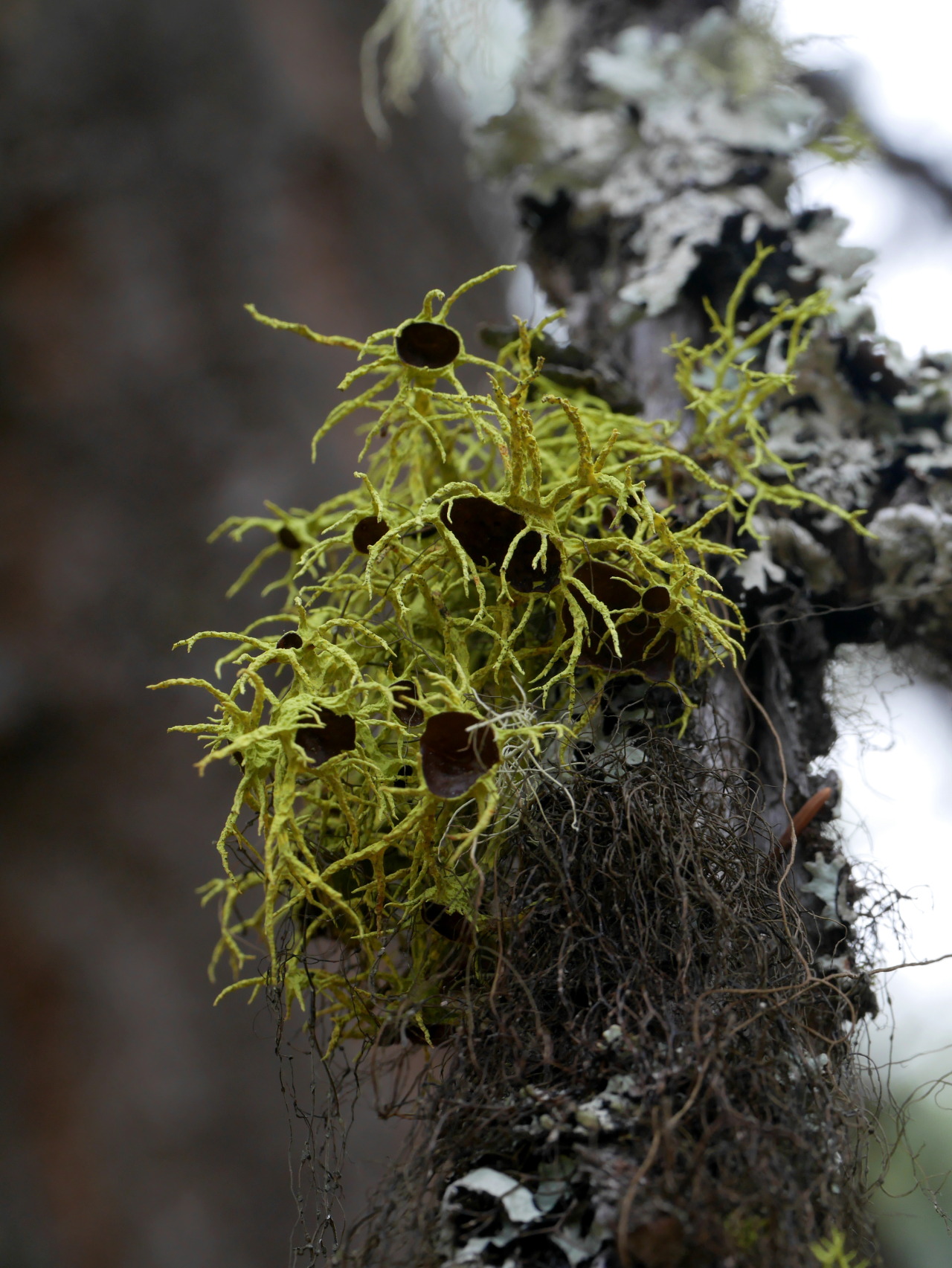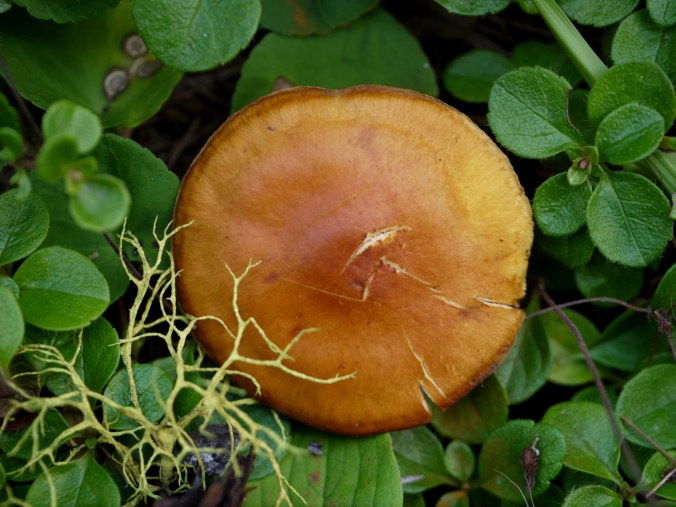Letharia columbiana “Brown-eyed Wolf Lichen”
Rattlesnake National Recreation Area, MT
October 24, 2015
Robert Niese
This species is closely related to the Wolf Lichen that completely coats Ponderosa Pines in our local Missoula valleys, but this species bears large brown-black fruiting bodies (apothecia) unlike its cousin. L. columbiana is definitely one of my favorite species and I was so excited to encounter a huge population of them alongside our more common L. vulpina here in the Rattlesnake. Like most lichen, we still know comparatively little about these organisms and their genetic relationships among one another. With genetic analyses ongoing, we will likely see a revision of our northwest Letharia species in the next decade.


